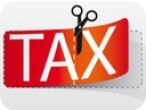Aug 22, 2024
Fed Awaits More Data Before Deciding Rate-Cut Size
BusinessFed Awaits More Data Before Deciding Rate-Cut Size
Fed Awaits More Data Before Deciding Rate-Cut Size
In a speech that has captured the attention of economists and investors alike, Federal Reserve's Patrick Harker emphasized the importance of additional economic data before the Fed determines the size of any future rate cuts. This prudent approach reflects the complexity and uncertainty of the current economic landscape.
The Federal Reserve's cautious stance is driven by several key factors:
- Inflation Trends: Current inflation rates are a significant concern for the Fed. Understanding whether inflation is a short-term spike or a long-term trend will be crucial in deciding the appropriate monetary policy.
- Unemployment Rates: Employment data provides a clear picture of economic health. A stable or declining unemployment rate might delay any immediate rate cuts.
- Global Economic Conditions: The interconnectedness of global economies means that what happens overseas influences domestic decisions. Global economic stability or instability could sway the Fed's decision.
- Market Reactions: The Fed must remain attentive to how their decisions will be received by financial markets. A premature rate cut could lead to unintended market volatility.
- Financial Stability: The overarching goal is to ensure the financial system remains stable. Any action taken by the Fed is always with an eye on maintaining confidence in the economic framework.
In Harker's speech, he underscored the need for a "wait-and-see" approach, indicating that the Fed would not rush into any decisions without a comprehensive understanding of the economic data. This approach not only builds confidence among stakeholders but also ensures that any actions are grounded in robust analysis.
Analysts speculate that the Fed's decision-making process will focus heavily on upcoming data releases, including future reports on inflation, GDP growth, and employment figures. Additionally, the Fed is likely to pay close attention to external factors such as geopolitical tensions and trade policies that could affect the domestic economy.
Implications for Investors and Consumers
For investors, the Fed's cautious stance suggests a period of relative stability in interest rates in the short term. However, the markets inherent volatility means that staying informed and agile is crucial. Here are some key takeaways:
- Portfolio Diversification: Diversifying your investment portfolio can help mitigate risks associated with interest rate changes.
- Investment in Bonds: For those seeking lower risk, fixed-income assets such as bonds may provide stable returns during periods of economic uncertainty.
- Monitoring Market Signals: Stay attuned to market indicators and economic reports which can provide early signals of potential Fed actions.
- Review Financial Goals: Regularly reviewing and adjusting financial goals can help align with the current economic environment and anticipate any shifts in monetary policy.
- Consult Financial Advisors: Seeking expert advice can provide tailored strategies to navigate through uncertain economic landscapes.
For consumers, understanding the Fed's moves can help in making informed financial decisions. From taking loans to choosing savings options, the interest rate environment can significantly impact personal finances.
- Home Loans: With potential rate cuts on the horizon, it might be beneficial to keep an eye on mortgage rates. Refinancing options might become more attractive if rates are cut.
- Savings Accounts: Interest rates on savings could be affected by a rate cut. It might be worth exploring other savings instruments or investments.
- Debt Management: Lower interest rates could make it cheaper to service debt. Consider consolidating high-interest debts or negotiating better terms.
As the Federal Reserve continues to monitor economic data, one thing remains clear: Individual financial decisions should be informed by a strong understanding of the broader economic environment.
Stay connected
Schedule a free consultation to discuss your goals with an expert
Discover our Podcast
Our expert guests provide valuable insights, tips, and advice, as well as engaging stories and thought-provoking discussions that will leave you with a newfound appreciation and understanding of business.



Join our Community
Discover useful tax saving strategies and advice from experts and fellow members. Our FREE community resources and support help you boost your tax savings, allowing you to retain more of your hard earned money for your family.